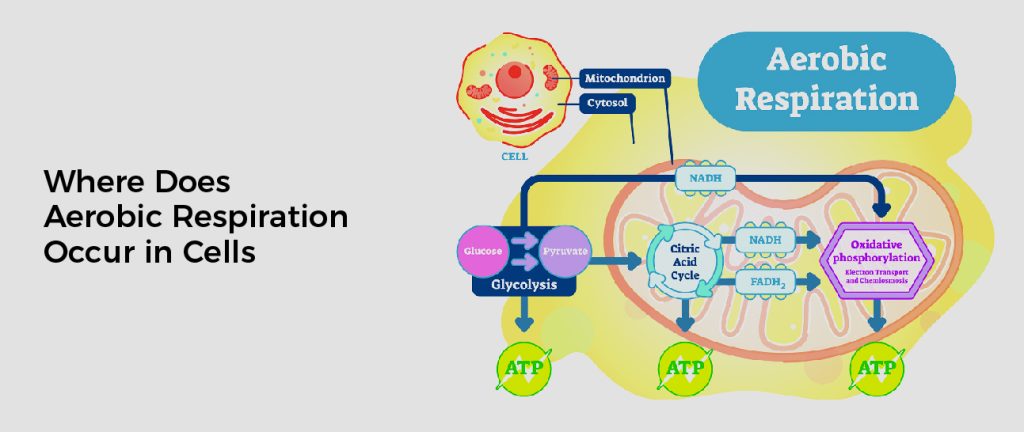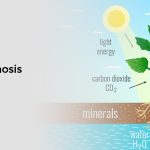Are you curious about the structures and processes involved in aerobic respiration? If so, then you’ve come to the right place! Aerobic respiration is an incredibly important process inside the body’s cells to produce energy. In this blog post, we’ll explore exactly wheredoes aerobic respiration occur within our bodies and why it’s essential for proper cell function. You’ll also better understand how this vital metabolic pathway plays a significant role in powering us through each day. So, if you’re ready to dig into some science-y stuff, let’s get started!
What is Aerobic Respiration?
Aerobic respiration is the process by which living things break down glucose molecules to produce energy in the form of adenosine triphosphate (ATP). This type of respiration occurs in mitochondria and requires oxygen to occur. The process involves breaking down glucose and releasing energy which is then used for various metabolic processes.
Types of Aerobic Respiration
Aerobic respiration can take one of two forms: glycolysis and Krebs cycle/citric acid cycle.
- Glycolysis is the breakdown of glucose molecules into pyruvate molecules, which produces a small amount of ATP energy. This process occurs in the cytoplasm of a cell.
- The Krebs cycle or citric acid cycle is a process that occurs in the mitochondria of a cell. This process involves breaking down pyruvate molecules into carbon dioxide, producing additional ATP energy.
Why is Aerobic Respiration Important for Cell Function?
Aerobic respiration is important for cell function because it provides cells with the energy needed to fuel cellular processes. This energy allows cells to grow, divide, and perform other metabolic activities. Without aerobic respiration, cells would not be able to carry out their functions properly and would eventually die.
Where Does Aerobic Respiration Occur
Aerobic respiration occurs mainly within the mitochondria of cells found in multicellular organisms. This process is vital for energy production and allows cells to perform metabolic processes at a higher rate than when using anaerobic respiration, which does not require oxygen. Aerobic respiration also occurs within single-celled organisms, such as bacteria, which use mitochondria-like organelles known as mesosomes for energy production.
Method: The Process of Aerobic Respiration
1. Glycolysis& Krebs Cycle
Aerobic respiration occurs through a series of complex steps, including glycolysis and the Krebs cycle. Glycolysis is the first step in aerobic respiration, which breaks down glucose molecules into pyruvate molecules to produce a small amount of ATP energy. The process then continues with the Krebs cycle, which further breaks down pyruvate molecules into carbon dioxide and produces additional ATP energy. This process occurs in the mitochondria of cells and requires oxygen to occur.
At the end of aerobic respiration, a large amount of energy has been released from glucose molecules and can be used by cells for various metabolic processes. This process allows cells to access and use the energy stored within glucose molecules for energy production.
2. Formation of Acetyl Coenzyme A
The process of aerobic respiration involves breaking down glucose molecules into acetyl Coenzyme A (acetyl-CoA). Acetyl-CoA is used in the Krebs or citric acid cycle to produce additional ATP energy. However, this process occurs within the mitochondria and requires oxygen to proceed. Through this process, cells are able to access the energy stored in glucose molecules and use it for metabolic processes.
Pyruvate oxidation
Pyruvate oxidation is the process by which a pyruvate molecule is transformed into another molecule of acetyl CoA. This conversion is an important step in cellular respiration. It occurs in the cytosol in bacteria, as well as in the matrix of the mitochondria. As a result, pyruvate plays a vital role in connecting glycolysis and the rest of cellular respiration.
The cytosol of bacteria contains a complex of enzymes known as the pyruvate dehydrogenase complex. This complex contains more than 60 subunits. Two of the enzymes are responsible for transforming pyruvate to acetyl CoA. They are the phosphofructokinase-1 and the pyruvate kinase. These enzymes are activated by Ca2+ and inhibited by citrate. In addition, pyruvate kinase can ferment to lactic acid without oxygen.
Pyruvate is transported from the mitochondrion to the cytosol and converted into acetyl CoA. This acetyl CoA is then transported into the citric acid cycle.
Pyruvate dehydrogenase
Pyruvate dehydrogenase is a complex of polypeptides involved in the oxidative decarboxylation of pyruvate. Moreover, it is part of the essential enzymes for aerobic respiration. The pyruvate dehydrogenase complex contains two E1 beta subunits and a transacetylase subunit. It is regulated by insulin, acetyl CoA, and a specific phosphorylation/dephosphorylation phosphatase.
During cellular respiration, the energy produced from the breakdown of molecules is converted into ATP. The process produces NADH as well. As part of the tricarboxylic acid cycle, the acetyl group is transferred to the NAD+ coenzyme, which then becomes a source of energy for the cell.
The pyruvate dehydrogenase enzyme complex is involved in many key cellular respiration processes. The complex is made up of a tightly arranged arrangement of polypeptides. Moreover, activation of the complex is regulated by reversible phosphorylation/dephosphorylation. A deficit in pyruvate dehydrogenase activity can cause the atrophy of the cerebral cortex and patchy tissue damage.
3. Citric Acid Cycle
The citric acid cycle is one of the main pathways of cellular respiration. It is involved in both anabolic and catabolic processes. This is because it carries the acetyl coenzyme A (A-CoA) through a series of chemical reactions that result in the production of energy and the creation of high-energy molecules called NADH and FADH.
The citric acid cycle is a highly conserved process. It is difficult to determine which enzymes are involved in each step. However, there are certain common steps, and a unique enzyme catalyzes each.
When a carbohydrate molecule is broken down into acetyl CoA and pyruvate, the carbon atoms are removed from the pyruvate and joined with oxygen to produce carbon dioxide. After enough turns in the citric acid cycle, all the carbon atoms from the acetyl group are released as carbon dioxide.
The citric acid cycle also plays a key role in the metabolism of fats. Several catabolic pathways converge on the citric acid cycle and are catalyzed by enzymes. These are known as cataplerotic reactions.
4. Electron Transport Chain
Aerobic respiration uses oxygen to create energy for the cell. It is accomplished by glycolysis, the citric acid cycle, and the electron transport chain (ETC). Each pathway is involved in a different aspect of cellular respiration.
In aerobic respiration, oxygen is used to combine with the energy produced in glycolysis and the Krebs cycle. Moreover, this process occurs through an electron transport chain (ETC), which involves a series of enzyme-mediated reactions that transfer electrons between molecules and produce ATP in the form of ADP (adenosine diphosphate). The final reaction of the electron transport chain is the combination of oxygen and hydrogen to produce water.


